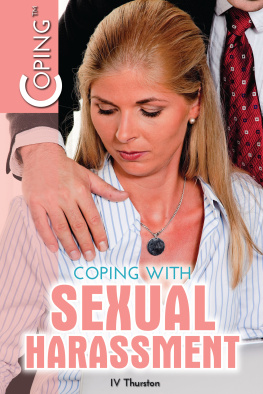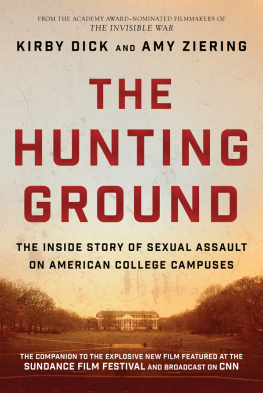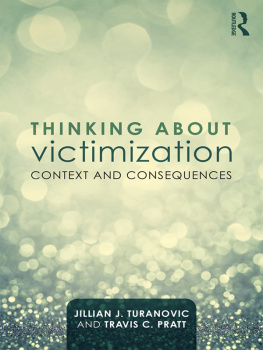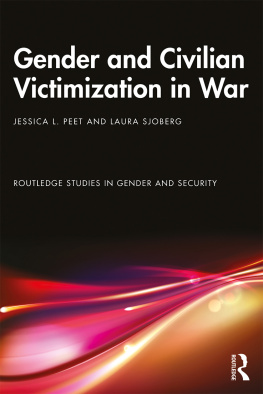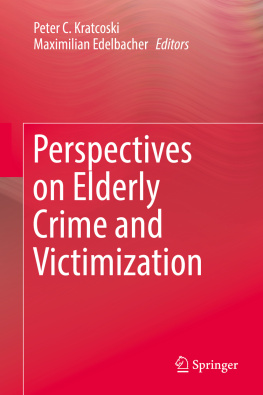Copyright 2010 by SAGE Publications, Inc.
All rights reserved. No part of this book may be reproduced or utilized in any form or by any means, electronic or mechanical, including photocopying, recording, or by any information storage and retrieval system, without permission in writing from the publisher.
For information:
| SAGE Publications, Inc.
2455 Teller Road
Thousand Oaks, California 91320
| SAGE Publications India Pvt. Ltd.
B 1/I 1 Mohan Cooperative Industrial Area
Mathura Road, New Delhi 110 044
India |
SAGE Publications Ltd.
1 Olivers Yard
55 City Road
London EC1Y 1SP
United Kingdom | SAGE Publications Asia-Pacific
Pte. Ltd.
33 Pekin Street #02-01
Far East Square
Singapore 048763 |
Printed in the United States of America
Library of Congress Cataloging-in-Publication Data
Fisher, Bonnie, 1959-
Unsafe in the ivory tower : the sexual victimization of college women/Bonnie Fisher, Leah E. Daigle, Francis T. Cullen.
p. cm.
Includes bibliographical references and index.
ISBN 978-1-4129-5476-1 (cloth: alk. paper)
ISBN 978-1-4129-5477-8 (pbk.: alk. paper)
1. Sexual harassment in universities and collegesUnited StatesStatistics. 2. WomenEducation (Higher) United States. I. Daigle, Leah E. II. Cullen, Francis T. III. Title.
LC212.862.F58 2010 |
378.1'958dc22 | 2009037019 |
This book is printed on acid-free paper.
09 10 11 12 13 10 9 8 7 6 5 4 3 2 1
Acquisitions Editor:
Editorial Assistant:
Production Editor:
Copy Editor:
Typesetter:
Proofreader:
Indexer:
Cover Designer:
Marketing Manager:
| Jerry Westby
Eve Oettinger
Karen Wiley
Trey Thoelcke
C&M Digitals (P) Ltd.
Caryne Brown
Gloria Tierney
Edgar Abarca
Jennifer Reed Banando |
Preface
U nsafe in the Ivory Tower represents the culmination of 15 years of sustained research on the sexual victimization of college women. Leah Daigle joined this collaboration at the mid-point.We entered this field of inquiry expecting to conduct a single project. Alas, we ended up devoting a large portion of our careers to investigating the victimization of college womena decision we are thankful we made.
At the inception of this journey, it was readily apparent that sexual victimization was part of a broader culture war being fought on and beyond college campuses. We had ideological leanings, of course, but we concluded that we could best contribute to this debate by setting aside our political views. Our goal was not to find what we wanted but what the data revealed. We trust that our efforts will both provide valuable insights into the study of sexual victimization and inspire others to stand on our shoulders and see much farther than we have seen. We are persuaded that it is through the accumulation of scientific knowledge that it will be possible to unravel the complex sources of sexual victimization and, in turn, to design effective interventions that transform colleges into safer havens for female students.
Over the past 2 decades, Mary Koss has been at the center of research on sexual victimizationand the object of considerable praise and considerable criticism. When we turned to this area of scholarship, we were moved not by her iconic status in the field but by her use of science to map out the extent and nature of sexual victimization among college students. Koss richly deserved the fields attention because she had used innovative methods to collect national-level data that yielded salient empirical results.We were not troubled by the criticism of her work, though some seemed a touch hyperbolic.After all, a key norm of science is organized skepticism. But in the end, it seemed that Kosss critics and, with a few exceptions, her defenders were merely swapping accusations. The time had come, we concluded, to stop the banter and, instead, to undertake the next nationally representative study capable of advancing our understanding of female students sexual victimization. We believed that our backgrounds in survey methodology and in victimology would enable us to conduct a project of some value.
The most daunting challenge was to figure out how to measure something as complex as sexual victimization. Especially with regard to rape, it is inordinately difficult to capture in a survey format when a sexual advance might have crossed the line from clumsy or bad behavior to a criminal offense. As we explain in detail, we designed a measurement strategy that merged the main advantages of Kosss Sexual Experiences Survey and of the Bureau of Justice Statistics National Crime Victimization Survey. This instrument was then used in a national study of college women that assessed their experiences with sexual victimization. In addition, we conducted three other national-level projects: an earlier survey of crime victimization on campus (with John Sloan); an investigation using National Crime Victimization Survey methodology to assess rape and sexual assault; and an analysis of how colleges responded to sexual victimization (with Heather Karjane).
Unsafe in the Ivory Tower reports what we have discovered about college womens experiences with sexual victimization. In a way, this is a methodological storythat is, an account of how we tried to use measurement as a means of illuminating a subject that had become embroiled in ideological controversy. More than this, however, Unsafe in the Ivory Tower attempts to paint an accurate portrait of the risks that female students face and how they respond when they are sexually victimized.We do not wish to disclose here the details of our findings; read on to learn what we have uncovered! But as a preview, we can share that college women not only face a modest but meaningful chance of being raped and sexually assaulted but also are at risk of unwanted sexual advances, of verbal and visual harassment, and of being stalked. Sexual victimization thus is an integral part of many female students livesa reality that is often endured in silence or, usually at most, a secret that is disclosed to ones friends. As a result, sexual victimization comprises a hidden inequality of college lifean unpleasant if not disquieting cost that is imposed unwillingly on college women. It is thus incumbent upon college officials to grasp the potential seriousness of sexual victimization and to take steps to make their campuses safe havens for female students.
We have incurred many debts in bringing Unsafe in the Ivory Tower to press, which we are now happy to acknowledge. In fact, we have learned that it takes a village to conduct a series of national studies and then to synthesize their diverse findings under one cover. Our fear is that we have received such wide assistance that we will leave out a supporter who richly deserves notice. Our apologies in advance for those we inadvertently fail to mention. Over the years, we have aged and, although wiser in some respects, we are more forgetful in others. We start by expressing our gratitude to our colleagues in the School of Criminal Justice at the University of Cincinnati and Georgia State University. Janice Miller and Jean Gary of the University of Cincinnati often dropped what they were doing and, with their typical friendly and supportive style, assisted us in a variety of ways. The Division of Prevention and Community Research at Yale University and John Jay College of Criminal Justice provided an intellectual home for Bonnie Fisher for the 20072008 academic year, a crucial time during which the writing of this book was under way.


